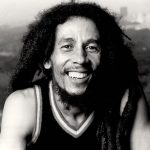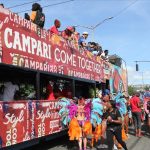
Tano stood on a hillside trail overlooking a horseshoe-shaped harbor where nearly nine years ago he had stood by his father’s side while they watched three strange sailing ships invade their fishing grounds. The White Gods advanced in small boats on the normally friendly Tainans, who were attempting to defend their land and village from the shoreline. The boats were full of crossbowmen who exacted a terrible toll on the mainly defenseless Indians but it was the large, man-eating dog of the booming bark and ferocious bite, that terrified them the most. Tano and his family were Siboneys, or “Rock Dwellers” and were the first inhabitants of this beautiful land. They had arrived by canoe from the large land to the north many centuries before. The Tainans, sometimes called Arawaks, had captured and used the Siboneys as servants after landing on this island from the South around 1000 BC.
The Tainans were mostly just masters. They did, however, disrespect the Siboneys in death when they took their bones and cast them on the middens (refuse heap) along with pottery shards and broken stone implements. This distressed Tano to no end as even a common Tainan is carried into the bush and stranded with some cassava and water when death approaches. High-ranking Tainans, like the Cacique (Chief), would be buried with ceremony in caves with selected body parts placed in honored pottery bowls.
Tano readjusted the bag over his shoulder that was full of captured water birds. He was proud to be given the daily job of providing birds to eat for his Cacique and other high ranking Tainans, but mostly he just reveled in the hunt. He would first locate some birds feeding in the slow moving water and would circle upstream. There, he would float calabash gourds past the wary birds until they lost interest in the intrusion. Tano would then slip a gourd, having eyes and mouth openings, over his head and submerge his body. Only the gourd would appear above the waterline. He then simply floated next to the feeding birds and grabbed their legs and pulled them under to drown, then placed them into his sack. Today, Tano got five birds before the rest of the flock became alarmed and flew away. Tano received word to return to the village. The White Gods had returned!
It was May, 1503, and Christopher Columbus was completing his 4th, and final, voyage to the New World when he reasoned that his two caravels were unfit to make the dangerous Atlantic crossing. He decided to take his worm-eaten and battered ships “Capitana” and “Santiago” to Hispanola for much needed repairs when a tropical storm off the coast of Cuba made him opt for Saint Jago (Jamaica), instead. He had claimed the island for Spain after a crossbow massacre nearly nine years ago. The storm damaged the already less than seaworthy caravels. When he re-entered Santa Gloria, where he had dispersed the hostile Tainans with a round of blank shot on that earlier voyage, he could only stand by and watch as the unrelenting sea water caused both caravels to settle into the soft sand less than a bow’s shot from the beach.
Columbus, his brother Bartholomew and Columbus’ son Ferdinand ordered the sailors to gather materials from the beach to build palm-thatched shelters on the decks of the hapless caravels. The cabins were mostly unusable from the rising seawater. He also sent word to the Cacique at the large nearby village of Maima that he wanted to trade for some water and provisions. Provisions were provided daily by the Cacique’s followers in exchange for ornaments and trinkets. However, the real problem remained. How to get off the island!
Tano’s Cacique had ordered a group of servants to go to Maima and assist in providing these White Gods with food and provisions and that group included Tano. Tano was now 23 years old and stood 5′ 10″ in height and was a giant compared to his Tainan captors. Tainans were short, slight-built people with coarse black hair and broad faces. Their most prominent feature was a thick, flat forehead caused by having a board strapped in place from early childhood. As a Tainan aged, their family would start to tie cotton bands ever tighter around the arms and legs causing them to be thinner and more fragile below those straps. This non-combative body style fit the mild and peaceful, simple and generous people. The most grievous of crimes was theft where punishment meant being pierced to death with a pointed stick. Tano placed his small amount of belongings along with some cassava bread and two calabashes full of water and reported to the Cacique’s large rectangular hut to meet the other travelers.
The two Siboneys who were joining Tano for the trip were a skilled hunter and a skilled fisherman. The hunter owned an alcos, a small, barkless dog, which he used to catch the elusive utia, or coney, which is a medium to large rodent. He also carried a net and noose to trap doves and snare parrots. The fisherman used a remora (sucking fish) which he skillfully placed in a school of fish so it could attach itself to another fish, then be retrieved and used again and again. He also carried a cast net to trap unsuspecting fish who swam closest to shore. The Cacique emerged from his hut and addressed the three hunters before beginning their half-day journey to Maima. The Cacique blessed a Yocahuna (male idol), wrapped it in a piece of colorful cloth and placed it in a woven reed bag for transport to the Maima Cacique as a tribute gift. He bid the group a safe journey and then returned to his many wives in the thatched-roof hut.
Tano and his traveling companions walked the jagged beach until the sharp rocks caused them to turn inland along a trail used by messengers between the far flung villages. Soon, the village of Maima came into view. Maima was the largest Tainan village on the north coast. The men and unmarried women were mostly naked except for an occasional palm leaf or short, cotton, brightly colored skirt with a fiber waistband. Many of the villagers wore tattoos, ornaments and necklaces of beads for decoration and walked around smoking cigars made from wraps of dried cohiba plant. Others were smoking a tobacco pipe, which contained the cohiba plant that they smoked until they were rendered unconscious. Tano and the men were escorted to the Maima Cacique’s house where they joined three of the chief’s men to go to the shore to take provisions to the White Gods.
Columbus watched from the deck of the Capitana as the six Indians approached, laden with provisions. Through the spyglass, Columbus noticed that three of the Indians did not have flat foreheads and were taller than the other three and he found that curious. Columbus sent a rowboat ashore and his sailors loaded the provisions while giving the Indian representatives some trinkets and small personal items from the sailors, like a knife and a sewing needle. Columbus continued to watch the group as they made their way back to the village and focused his attention on Tano. Perhaps someday he would like to know more about this young man but he had a more pressing problem at this time. After eating a good meal, Columbus called his sailors together and asked for volunteers to go to Hispanola by dugout canoe. Only Diego Mendez came forward, to be later joined by Bartolome Fieschi, to attempt the perilous journey. They purchased a dugout canoe, provisions for the long crossing and some paddlers from the Cacique in exchange for a hawk’s bell, pair of scissors and a looking glass. Bartholomew went along till they reached the east end of the island and watched them fade out of sight before returning to Santa Gloria to hope beyond hope.
Weeks turned into months and Tano’s working position had changed – he was now a part-time personal servant to the Cacique. The White Gods ate twelve times more per day than the average Tainan and the Cacique was tiring of the trinkets and useless goods. The waterfowl and birds were becoming scarce and the hunters needed to range farther from the village with their alcos to capture the elusive utia. The Cacique sent for Columbus to discuss the situation. When Columbus approached the village, he noticed the Cacique had a large group of villagers in front of his hut where they were listening to a zeme (carved idol) speaking to the group. From his position behind the hut, he noticed the tall Indian he had seen on the beach talking into a bamboo tube connected to the back of the carved idol. Columbus decided not to reveal the deception, as he did not want to destabilize the Cacique’s position with his people. Columbus noticed that the Cacique and his followers we not treating him and his men like the White Gods they once were and that was worrying him a lot.
He decided to trade for several canoes and provisions to be ready for the day when he and his men might have to leave to save their lives. The meeting was finished. The Cacique ordered Tano and some other servants to carry the canoes and provisions over to the beach where the ships were stranded.
Mutiny! Francisco and Diego Porras and scores of disgruntled sailors seized the canoes and provisions from the beach in the pre-dawn hours. They kidnapped about one hundred of the villagers necessary to paddle the canoes in an attempt to reach Hispanola. They barely had cleared the east end of the island when a large storm approached. The sailors frantically tossed some paddlers overboard to lighten the load. When the terrified Indians clung to the side of the canoes, the sailors chopped off their hands with a cutlass and left them to die in the shark infested waters. The Porras brothers and their followers, having little choice, decided to return and throw themselves on the mercy of Columbus and his sailors. Columbus forgave the sailors for their action but imprisoned the Porras brothers in a storeroom on the Capitana. Now Columbus and his men had no more boats or provisions and the Indians did not want more useless trinkets. The Tainans had decided that these White Gods were no longer powerful and their Cacique began plotting how to kill them. The tension was thick in the air as Columbus and his men knew their days on Saint Jago were numbered. Columbus decided to play his one last trump card.
During the early moonlit evening, the Maima Cacique gathered a group of Siboney servants, including Tano, in front of his hut and ordered them to prepare for an attack on Columbus and his men. The attack would take place when they left the relative safety of their caravels the next morning to forage for food. Just at that time, Columbus and a few sailors boldly entered Maima. Columbus loudly told the Cacique that the God he worshipped was angry with the Tainans for stopping the provisions. He continued by threatening to turn the moon to blood to show the God’s power. Columbus’ timing was perfect as the lunar eclipse began just as the astronomy book had predicted. The Tainans were terrified and cried in fear. They begged Columbus to plead to his God on their behalf. The Indians quickly promised to never let Columbus and his sailors want for anything. So, when the moon began to reappear, the Indians were overjoyed and deeply thankful.
Columbus surveyed the cowering crowd and saw the new respect and reverences that he desired in the eyes of all except for Tano who refused to bow his head. Tano realized that this was the end of the end. This “cosmic event” sealed the Indian’s fate as their complete extinction took only a few more generations. Columbus and most of his sailors were eventually rescued. Spain’s domination over Saint Jago was later replaced by England’s colonial rule over Jamaica that continued over the next four hundred years.
Respect Bill Evans
Need help in planning your adventure travel while in Jamaica. Feel free to email me at the following addresses : [email protected] OR [email protected]







